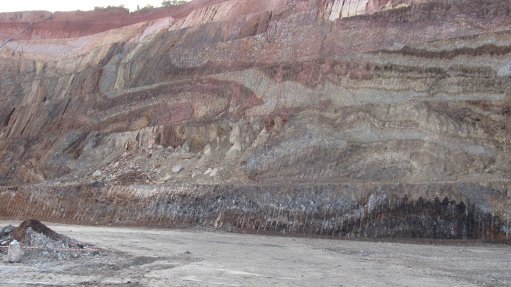
WORLD-CLASS OPPORTUNITY Copper demand from the Central African Copperbelt is set to experience a revival, owing to increasing infrastructure development
Mining in the Central African Copperbelt is likely to experience an upswing in the near future, says consulting engineers and scientists SRK Consulting chairperson Roger Dixon.
He notes that securing mining investments in the Copperbelt, which runs through the southern Democratic Republic of Congo (DRC) and northern Zambia, has been difficult in the current depressed commodities market, with global prices for copper having steadily dropped, following record highs in 2011.
Dixon highlights that the low commodities market led copper-focused Zambia to raise royalties to bolster revenues, adding that the increased royalties have subsequently been reduced.
Meanwhile, TSX-listed Ivanhoe Minerals reaffirmed last month that it had sold 49.5% of its interest in the DRC-based Kamoa copper project to the Chinese State-owned Zijin.
Dixon states that the most significant barrier for investment in the Copperbelt is the lack of energy and transport infrastructure.
“Inconsistent power supply often leads to mining companies employing diesel generators, which are significantly more cost intensive than electricity supplied from the national grid.”
Also, transport costs for equipment, material and supplies, such as diesel, into the Copperbelt place further economic strain on mining operations, impacting drastically on operational profitability.
“Mining companies worldwide are cutting costs to survive the depressed commodities market,” he says, noting that mining companies with significant operational assets are selling off some of these to reduce debt and costs.
“Another strategy commonly employed during tough economic conditions is to reduce overhead costs, which normally results in a significant number of retrenchments at senior technical level. However, when the market does recover, the very people mining companies need to meet production and productivity targets will no longer be employed,” he points out.
However, Dixon says, despite the current financial challenges, there are companies that are strategically positioning themselves to take advantage of the eventual upturn in copper mining.
He states that copper prices are expected to improve on the back of increased infrastructure development worldwide, particularly with regard to electricity generation projects that require a significant amount of copper, owing to the metal’s electricity-conducting properties.
Canadian metals and mining company First Quantum Minerals (FQM) announced last month that it had raised C$1.4-billion through a common share equity offering. The company said it would use the bulk of the proceeds to reduce the company’s overall debt and, in the process, reduce its interest expense.
FQM, which owns significant assets in Zambia, added that it would also make further capital investments in existing production facilities and development projects “in respect of strategic initiatives to further enhance its growth pipeline”.
Dixon commends FQM’s investment strategy during the current depressed commodities market, adding that the company will be well positioned to take full advantage of the next supercycle in the copper price.